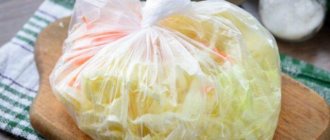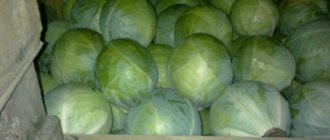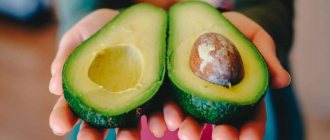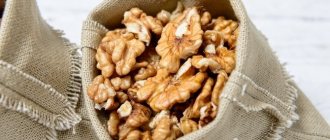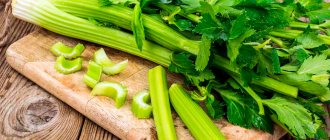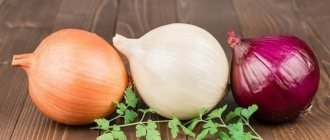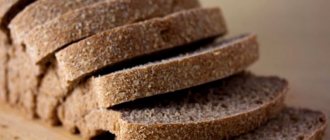Many housewives are engaged in the preparation of vegetables and fruits by fermentation, which results in the production of lactic acid. Thanks to the enzymatic process, products retain their nutritional qualities for a long time. Everyone's favorite sauerkraut, under the right storage conditions, does not lose its nutritional value for up to 10 months.
Vegetable selection
The correct choice of cabbage depends on the quality of the original product:
- only late and mid-late varieties will be suitable for further processing;
- the vegetable must be cleaned of dirt, green leaves, and weighed;
- the head should be tight, dense without visible damage from diseases and pests;
- the stalk should be cut level with the head of cabbage, and the green leaves should be washed and prepared to cover the top layer of chopped vegetables;
- only cabbage is suitable for processing; when cut, it will have a snow-white-cream color without visible damage to the middle and stalk by rot and fungi;
- prepared cabbage should be processed within 24 hours.
Preparatory stage
Before sending for winter storage, cabbage is prepared and sorted. Rotten and spoiled vegetables are thrown away, damaged ones are used for food within 2-3 weeks - they will not last long.
Selecting and preparing cabbage
For laying on the balcony, choose medium-sized heads of cabbage, elastic and tight, with dense and properly formed leaf mass, preferably slightly flattened. Vegetables are inspected for the presence of slugs and mold - they significantly reduce the winter shelf life.
Features of harvesting
The order of harvesting plays an important role. Cabbage is removed from the beds on a warm, dry and sunny day. The heads of cabbage are pulled out carefully, trying not to damage the stalk, along with the root. The remaining soil is shaken off and the top leaves are removed. After harvesting, the harvest is laid out on the veranda for several days, avoiding moisture.
Then the cabbage is transferred to a cool pantry for 10-12 days. In such conditions, the crop dries out from excess moisture and prepares for a long winter on the balcony.
Rules for long-term preservation
The fermented product contains in its formula: ascorbic acid, methylmethionine, vitamin K, choline and folic acid. The concentration of nutrients in sour vegetables exceeds those of fresh vegetables. Therefore, it is worth knowing how to store sauerkraut at home in order to preserve all the beneficial substances:
- Place. A key factor influencing the length of shelf life.
- Variety The correct choice of “pickling” varieties and hybrids is necessary, the description of which includes recommendations for pickling.
- Capacity. It is possible to preserve a sour delicacy for a long time only in a wooden, clay, or enamel container.
- Protection of workpieces from mold damage. Treating the fermented product with food fungicides will eliminate the negative effects of fungi and preserve the dish for a long time.
- Temperature conditions. The storage temperature of the product should be constant within +1 - +4 degrees. When the regime is increased, lactic acid bacteria will begin to actively multiply, which will lead to rapid oxidation of the product.
- Amount of brine. The finished dish must be stored so that it is completely covered with liquid. Only when in solution does cabbage retain all its vitamins and not fade.
Worth knowing!
You can stop the fermentation process when the vegetable has the best taste by draining the old brine and replacing it with a new one. Place containers with products in a cold place with an air temperature of 0 degrees.
Variety
Only some mid-season and late-ripening hybrids and varieties of vegetables are suitable for pickling, fermentation, and long-term preservation:
- Slava-1305;
- Moscow late;
- Present;
- Sugarloaf;
- Grant F1;
- Yaroslavna;
- Langedijker;
- Amager;
- Stone head;
- Zeno F1;
- Ditmarscher Frewer;
- January King;
- Innovator F1;
- Snow White;
- Liberator F1;
- Paradox;
- Count F1.
Capacities
To store sour delicacies for a long time, choose a suitable container.
Wooden
Such containers contain antioxidants and organic compounds, therefore they will prevent the formation of foam cells in the product and give it a unique, refined taste. The shelf life of cabbage in such containers is up to 10 months.
Enameled
When preparing a dish in such a container, it should be inspected for chips and scratches. The product will react with the exposed metal and oxidize. The shelf life of cabbage in enamel containers is up to 5-6 months.
Glass
Fermented products in glass containers should be stored filled to the very neck. The neck is sealed tightly, and the cabbage is stored in glass for up to 4 months.
Plastic
To store sauerkraut at home, plastic containers must be washed with baking soda, dried, and free of foreign odors. Compact containers with fermented product can be conveniently stored on refrigerator shelves, and the shelf life of the dish is up to 3 months.
Clay
Pottery is a mineral sponge that absorbs moisture. Therefore, such dishes will be a good option where you can store sauerkraut without letting the workpiece wither. In addition, the moisture that comes out through the clay pores evaporates, cooling the walls of the dishes and the product. In such a “mini-fridge”, cabbage can be stored for up to 10 months.
Worth knowing!
Storing products in aluminum or steel containers is unacceptable! Lactic acid bacteria, reacting with metals, enhance its absorption and accumulation in tissues.
Temperature
Temperature is the most important factor influencing the storage of fermented delicacies:
- from -5 to 0 degrees – destruction of the tissue structure of the product, loss of all nutritional qualities;
- from 0 to +5 degrees - product storage up to 11 months;
- from +5 to +10 degrees - preservation of all nutritional properties for 15-20 days;
- from +10 and above - an enhanced fermentation process begins, and the product sours on the second day.
Where and how to store sauerkraut in an apartment
Traditionally, cabbage is fermented in three-liter jars and stored in them on the bottom shelf of the refrigerator . Housewives also place the workpiece in plastic containers with a lid and even plastic bags, tightly tied or clamped with a household clamp.
Sometimes cabbage is stored in the freezer . To do this, it is laid out in small portioned containers that can be taken out without separating the required volume of cabbage from the total mass. This method has a disadvantage - frost has a destructive effect on vitamin C (ascorbic acid), which is part of sauerkraut.
Storage methods
To prevent the process of decomposition of organic substances in the finished cabbage from resuming, the dish should be placed in a cold place.
Cellar
A good option for storing finished cabbage would be a wooden container installed in the cellar. However, if it is not possible to purchase such dishes, enamel or clay volumetric containers will be a good alternative. The basement must be disinfected from moldy fungi, poison from rats and mice must be spread out. Maintain the temperature in the basement within +1 - +6 degrees, ensure good ventilation.
Balcony
If you don’t have a cellar or basement, you can store food in apartments on a loggia or balcony. In the hinged design it is convenient to install glass containers with cabbage of different sizes. When persistent frost sets in, wrap the jars with the preparations in old blankets or mattresses. The workpiece can be stored in such a place for a long time at an air temperature of -10 to -15 degrees. However, frozen treats should be eaten quickly. The product cannot be re-frozen, since all its beneficial vitamins and minerals have already been destroyed by temperature changes.
Fridge
Refrigeration units are well suited for saving workpieces for six months. The only drawback of storing the product in the device is the lack of free space. It is very important to keep plastic buckets and jars of cabbage in the unit with lids tightly closed. This will determine how long sauerkraut is stored in the refrigerator. Products with a specific odor can penetrate the workpiece, be absorbed into it and spoil the taste.
Room conditions
It is almost impossible to properly store the workpiece for a long time in room conditions. However, in industries that ferment vegetables in large volumes, artificial cooling using calcium chloride is used to successfully preserve the preparations. You can repeat the technique at home. For this:
- 5 ampoules of calcium chloride must be dissolved in 5 liters of water;
- pour the resulting liquid into 4 thick plastic bags and freeze;
- Place 2 bags of frozen liquid in a wide basin, place a thin board on top, and place a container with prepared cabbage on it;
- Place the remaining 2 bags on the sides of the container;
- as the liquid thaws, place the bags back in the freezer and place them near the container;
- The cooling process should be carried out for two days;
- After this, the workpiece will be stored at room conditions for about 2-3 months.
Worth knowing!
You can store cabbage for up to one month at room temperature by adding a handful of sugar to it every day. The taste of the product will eventually change, but the product will not oxidize.
Deadlines: minimum and maximum
If all storage conditions for pickled white cabbage are met, the shelf life can be up to 9 months.
The duration of storage of the workpiece is influenced by various factors:
- external conditions (temperature, humidity, protection from light);
- containers (plastic, glass, etc.);
- open or closed container;
- a sufficient amount of brine and some other points.
In the refrigerator in an open, unsealed container, fermented cabbage can last 1-1.5 weeks. If multi-month storage is required, then packaging in thick plastic bags and freezing is suitable.
This article will tell you how long sauerkraut can be stored.
| Storage | Shelf life | Note |
| Fridge | 3 months | In a closed container |
| 10 days | In an open container | |
| Cellar | From 3 months | Subject to all conditions |
| Apartment | Up to 3 days | Regardless of container |
| Glazed balcony | 4-5 months | Subject to all conditions |
| Street conditions | Depending on weather conditions | |
| Freezer | 8-9 | No re-freezing |
Before freezing, it is convenient to immediately put the fermented product into separate bags in order to defrost not the entire volume, but the required amount at a time.
How to prevent mold from appearing
After some time, redness caused by pathogenic yeast may appear on the surface of the containers with the workpiece. As well as mucus and flabbiness of the product, which arose as a result of the development of aerobic bacteria that secrete cellulose-degrading and pectolytic enzymes. You can eliminate fungal mold using natural ingredients:
- Corn and olive oil poured on top of the workpiece. The fat in the oil forms a film that does not allow oxygen to pass through. It also prevents the development of psychrophilic bacteria, which give cabbage a bitter taste.
- Seeds and mustard powder wrapped in cheesecloth placed inside a container of cabbage will prevent the growth of Rodotorulla yeast, which produces red-pink carotenoids.
- Horseradish twisted in a meat grinder helps to neutralize groups of microorganisms that convert sucrose into the polysaccharide dextrin, causing mucus in the product.
Worth knowing!
Horseradish rhizomes contain essential oils that prevent the normal development of lactic acid bacteria. Therefore, the phytoncidal vegetable should be added only after the fermentation process.
How many days is cabbage pickled?
Pickling is an ideal way to preserve vegetables. If you follow the right proportions of ingredients, you get a crispy and savory snack. The only negative is the need to keep the vegetable mass warm for a limited period of time.
Only late and mid-ripening varieties are selected for fermentation. They are distinguished by their sweet taste, dense heads and elastic leaves. The fermentation process is greatly simplified due to the presence of sugar in the structure of the vegetable. The Belosnezhka, Podarok, Belorusskaya and Amager varieties are ideal for pickling.
The fermentation time of cabbage is influenced by various factors, which include the amount of salt added. It is advisable to adhere to the correct ratio, so salt by weight of the vegetable mass should be 2-3%. For 10 kg of mixture, 200 g of seasoning is added.
Fermentation begins only at high temperatures. Therefore, properly prepared vegetable mass is left at room temperature, which is 18-22°C. It is impossible to say exactly how long cabbage should be salted before it is ready, so the appetizer is checked periodically, and gases are removed from it by piercing it with a wooden skewer.
Typically, fermentation is carried out over a period of 3 to 5 days. At high temperatures, all vitamins are preserved, and due to the acid content in the vegetable, the appearance of microbes is prevented.
If you know at what temperature to ferment cabbage and how many days you need to keep it in the room, you will get a very tasty and crispy product. The ideal temperature is considered to be 21°C. On about the fifth day, the vegetable mass becomes sourish-winey and pleasant to the taste and is moved to a cold room.
Adviсe
By following the recommendations of housewives who successfully preserve homemade preparations, you can eat pickled vegetables for a long time without losing their taste and beneficial qualities. The main ones:
- The fermented product, which will be stored in a wooden container that smells of dampness and old age, will become saturated with an unpleasant odor and will lose its natural taste. Therefore, before placing shredded vegetables, you should make sure that the containers do not smell.
- If during the fermentation process the brine evaporates and the cabbage is exposed, you should prepare a fresh brine solution and pour over the vegetables.
- If the product is peroxided during storage, you can add a little vinegar and sugar to improve its taste.
- Vegetable preparations in plastic containers should be eaten first. The corrosive smell of plastic is quickly transmitted to food that the material comes into contact with.
Pickled preparations are much healthier than pickled vegetables, since during the preservation process beneficial microelements are destroyed. And in high-quality cabbage prepared and preserved using the fermentation method, all the substances necessary for digestion and increasing immunity will be preserved.
How do you like the article?
Recommendations
The following recommendations will help you better preserve vegetable preparations:
The larger the shredding, the better the cabbage is preserved.- Coarsely chopped pieces of cabbage retain more nutrients during fermentation.
- Adding cranberries or lingonberries to fermented cabbage not only adds originality to the dish, but also prevents the formation of mold.
It also extends shelf life due to the introduction of such a natural preservative into dishes. An alternative option is to add mustard powder. - Sauerkraut does not tolerate sudden changes in conditions, especially temperature. Therefore, it is advisable to avoid moving the workpiece from cold to warm and back.
- When laying out cabbage in containers, you must first lay out the vegetable and then pour in the brine.
- If cabbage has been sterilized, some of its beneficial substances will be lost.
- If the top of the cabbage preparation has dried out, it should be collected and discarded, and the rest of the cabbage should be mixed after adding mustard powder.
- If the product is stored in improper or questionable conditions, it is not advisable to use it for food due to the risk of product poisoning.
The brine should cover the workpiece completely.
Which cabbage is better to choose?
Cabbage is fermented in almost every home, regardless of whether you have your own garden or buy vegetables at the market. But not any cabbage is suitable for pickling. In order not to be disappointed with the result of your labor and the taste of the final product, you should carefully choose a vegetable. Medium and late ripening varieties that have sufficient dry matter and denser leaf mass are suitable for pickling and pickling. Early varieties do not meet these criteria and are not suitable for pickling.
The heads of cabbage should be large in size, dense, not loose (the tighter the forks, the whiter and more tender the leaves inside), white in cross section (this indicates the presence of more sugar, which affects the fermentation process during fermentation), the taste of the head of cabbage is when fresh it should be sweet and crunchy. The stalk should also be elastic and juicy. When choosing cabbage in late autumn, you need to make sure that it is not frostbitten.
Mid-season varieties for pickling:
- Slava - ripens in 113–119 days, fruit - up to 5 kg;
- Gift - ripens in 120–135 days, fruit - up to 5 kg, with a spicy-spicy sourness;
- Anniversary F1 - ripens in 90–95 days, fruit – 2.5–4 kg;
- Dobrovodskaya - ripening on the 110th day, fruit - 10-11 kg, wonderful taste;
- Belorussian - ripens in 120-130 days, fruit - 3-4 kg, it is better to ferment immediately after harvest.
Late varieties for pickling:
- Turkis - ripens in 150-165 days, it is better to ferment closer to winter, fruit - 3-4 kg;
- Geneva F1 - should be fermented at the end of winter or early spring, fruit - 3-4 kg;
- Amager - harvested after 150-175 days, fruit - 2.4-4 kg, taste bitter in autumn, improves with time;
- Snow White, - ripening period - 145-160 days, fruit - 2.5-3.9 kg.
Hybrid varieties are also popular when choosing for pickling; variety selection is aimed at obtaining larger heads of cabbage:
- Moscow late-15 - ripens in 115-140 days, fruit - 10-18 kg;
- Kolobok - ripening in 150 days, fruit - over 5 kg;
- Menza F1 - ripens in 110–115 days, fruit – 5–9 kg;
You can also ferment red cabbage. It has coarser fiber and a bitter taste.
Main problems
Difficulties often arise when preparing pickled vegetables. They are often associated with the fact that people do not know how many days to ferment cabbage at home. They miss the deadline when it is necessary to transfer the workpiece to the cold, and the product turns sour.
Other problems include:
- lack of the required amount of juice, but you can cope with this by adding water;
- if you do not pierce the mass with a skewer, the carbon dioxide will cause the product to become bitter and tasteless;
- using too many carrots causes the vegetable to become soft;
- when the temperature is violated, mucus appears;
- the film occurs at low temperatures;
- lack of salt leads to hard products.
To get a tasty and healthy snack, it is recommended to figure out how many days cabbage is fermented under pressure, which varieties are best to choose and what ingredients to use.
Alternative options
If there is a large harvest of Chinese cabbage, part of it can be canned or dried.
Dried
Drying cabbage allows you to obtain a semi-finished product that does not take up much space and can be stored at room temperature.
To dry, cabbage leaves are chopped. You can dry it in the oven or using a special electrical appliance designed for vegetables and fruits.
Oven drying:
- The temperature in the oven is set to a minimum of 50-100°C.
- Place the chopped cabbage in a thin layer on a baking sheet.
- Place the baking sheet in the oven.
- Turn on the “convection” mode, and if it is not there, leave the door ajar.
- Stir the dried vegetable periodically.
- After 3 or 4 hours the cabbage will be ready.
In an electric dryer, drying is performed in a similar way:
- The chopped cabbage is laid out.
- Set the temperature to +50°C or +60°C.
- Turn on the device for 5 hours.
After cooling, the product is placed in canvas bags or glass jars. The advantage of storing in fabric packaging is that the workpiece will have air exchange and will not become damp.
If you choose glass containers for storage, then during long-term storage you should periodically open the lid to ventilate the contents.
In pickled
The fermentation of Chinese cabbage is different from that of white cabbage. To prepare you will need:
- cabbage – 5 kg;
- water – 0.3 l;
- salt – 1 tsp;
- sugar – 1 tsp;
- garlic – 1 clove;
- vinegar - ¼ cup.
Cooking process:
- They chop Pekinka.
- Transfer it to a large container convenient for mixing all the ingredients.
- Pour in water and vinegar.
- Add salt and sugar.
- Squeeze a clove of garlic through a garlic press.
- Everything is mixed.
- Compacted.
- They organize oppression.
- After 1 day, the cabbage is pierced in several places with a wooden stick.
- Leave for 1 day.
- Take it out into the cold.
- Leave for another ½ month.
Pickled Chinese cabbage for the winter, video recipe:
In the salty
For preparation you will need the following ingredients:
- Chinese cabbage (1 kg);
- salt (0.1 kg).
Salting procedure:
- Rinse the cabbage.
- Cut the vegetable into pieces (if the head is small, then into quarters), but you can also chop it finely.
- Add salt.
- Mix with your hands, lightly mash.
- Pack tightly into prepared containers.
- Organize oppression.
- Leave for up to 4 weeks in cool conditions.
- Remove the pressure.
- If necessary, transfer to containers more convenient for storing the product.
- Store in a cool place.
When salting in glass jars, each kachen should be cut into small pieces.
What to do with cabbage after freezing
After freezing, you should not eat cabbage raw; it must be cooked: boiled in borscht or stewed. The reason is that during long-term storage at low temperatures, the leaves of the vegetable are damaged by ice crystals.
When the cabbage thaws, it will have a rather unpleasant appearance, so you won’t even want to consume it raw. It’s better to immediately throw it into boiling water if you plan to cook cabbage soup, or into a hot frying pan if you want to enjoy stewed cabbage. You cannot refreeze vegetables after defrosting. It will be spoiled and even dangerous for digestion.
If cooked stewed cabbage has been frozen, you need to defrost it in the microwave, and then, when it has reached room temperature, cook it in the oven or in a frying pan.
